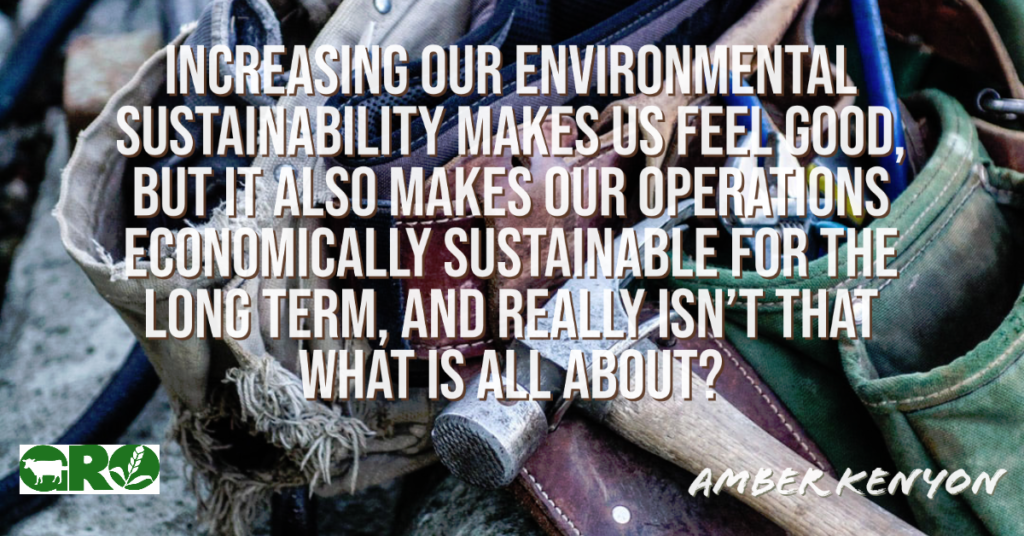As farmers we are often considering new ways to make our farms profitable. Especially after a year like the last one, when weather and market challenges were high, we are trying to figure out how we can mitigate the risks of these conditions for next year. While we spend time considering seed varieties, equipment upgrades, grain dryers and synthetic fertilizers, or crop protection products, we have the tendency to forget the environmental services that can help our yields and how these environmental processes can also help to mitigate the risk of volatile markets and weather. Production practices can be very important and have a large impact on our bottom line, but our environmental practices can do the same and these do not often get looked at through quite the same microscope.
There are more studies being done on the environmental impact of things like beneficial insects in marginal land on the yield of crops now than in previous years. There are also studies being done on how polycultures in crops and pasture lands can impact growth of the plants and the resilience of the desirable species. Leaving residue and not turning up our soil has been proven to enhance water holding capacity in our soils. There are studies being done on not only the beneficial insects above the ground, but on how the processes within the soil ecosystem itself can help strengthen our plants when these processes are intact and healthy. All this research is imperative to helping not only the environmental sustainability of our agricultural operations, but our economic sustainability in the long term as well. The more information that we have in our toolbelts about what makes our land tick and what the optimal way to grow our crops is, the more resources we can turn to when things like the markets and the weather are just simply not working in our favour.
Let’s look at this through two completely different hypothetical situations. In the first, we have Willtheygobroke Farms who are doing a fantastic job of getting great yields on their canola. Year after year they see some fantastic numbers coming in from the grain buyers, however the farm’s input costs have also steadily been rising as they have had to pay more in recent years for fertilizer and disease resistant varieties of seed, not to mention that the cost of running the grain dryer has been substantial in the last couple of wet years. Willtheygobroke Farms has just finished running a gross margin on their operation and have realised that while their gross income has been climbing, their profit margin has actually been declining. They are now at a place where it is time to make some hard decisions on how to reverse this cycle that they have found themselves in.
In scenario two, Willtheygobroke Farms has been slowly transitioning to a more regenerative model. They have been rotating crops, and while not every year has been as prosperous as the canola years, they are seeing the benefits of having crops like hay thrown into their rotation. They have an agreement with their neighbouring rancher and he grazes crop residues each winter on their land. They have stopped farming the wetland and leave a decent sized buffer zone when they run the seeder across their property. This was nerve racking the first year, as they thought that it would severely impact their yield, but as time passes, they are noticing that the yield outside of the buffer zone actually seems to have increased. Willtheygobroke Farms went through the process of having an Environmental Farm Plan done and have seriously looked at areas that they can make some changes. Last year they applied for CAP funding and received money to plant and protect a new shelterbelt. They also made some upgrades to their grain dryer to help increase efficiency and just discovered that there is retroactive funding for that as well. While these changes have cost them some time and money, they are seeing their gross profit margin increase. Their gross income may not be as high as in the canola years, but the cost of their inputs is also much lower. And on top of it all, they were able to take advantage of some government funding programs to help them along their way.
I think that we often feel the need to separate out the economics from the environmental sides of farming. There is this idea that if we want to be economically sustainable, we will need to focus on what is above ground, and if we want to be environmentally sustainable then we do so at the expense of economic sustainability. So much research is showing us that this is not necessarily the case for most producers. Not only does increasing our environmental sustainability make us feel good, but it also makes our operations economically sustainable for the long term, and really isn’t that what it is all about? The improvements that we can make on our farms tend to make economical sense all on their own merit, but there is a good amount of government funding and help available to implement some of these changes. If you are curious about what an Environmental Farm Plan is and how to apply, call 310-FARM. There is also funding available through the Canadian Agricultural Partnership Producer Program and the Efficient Grain Dryer Program to help with a lot of the upgrades needed to become more sustainable for the long term. Farming can be a challenge, let’s do everything that we can to make it a challenge that we can be successful at for generations.
Amber Kenyon
Gateway Research Organization

